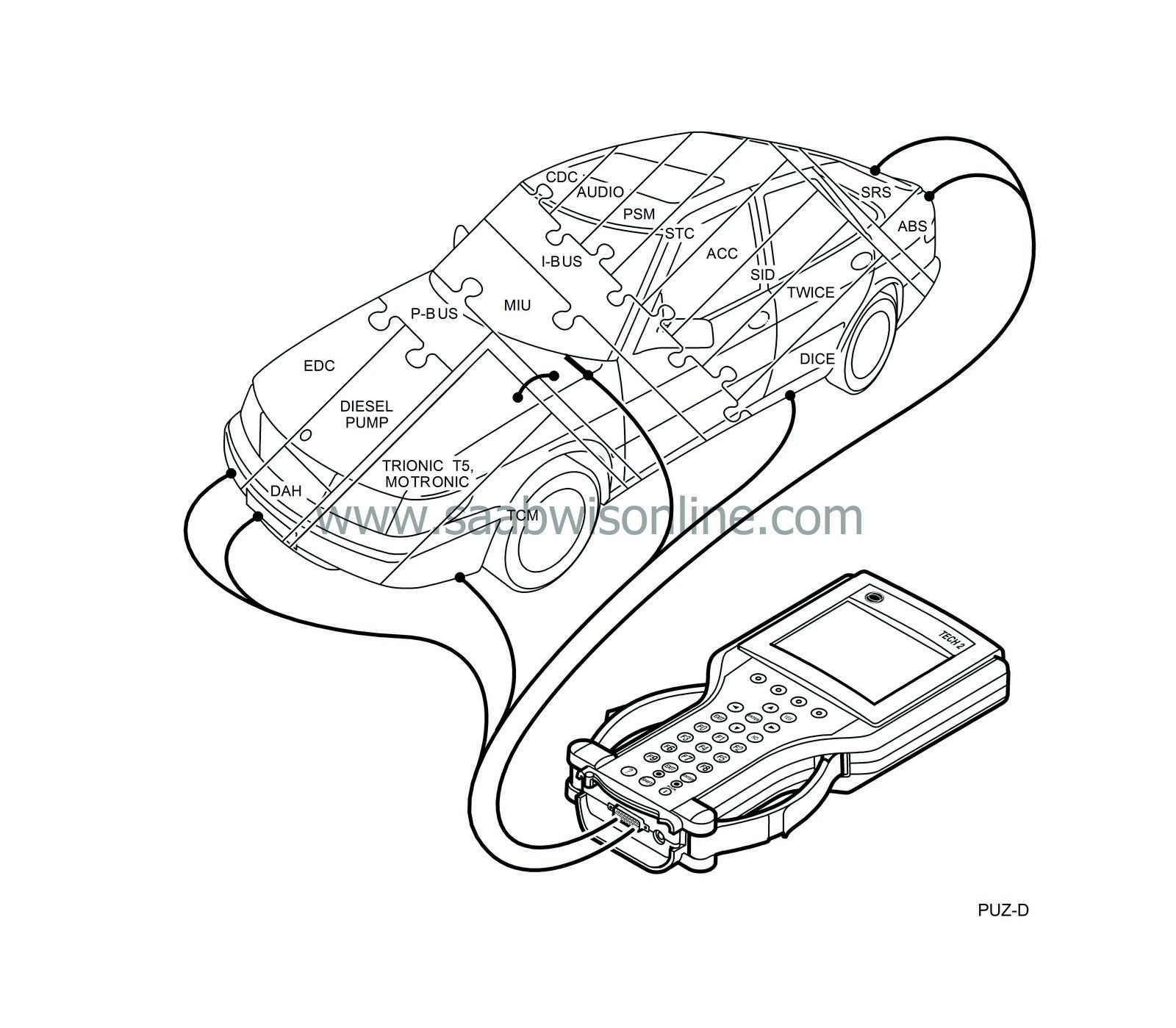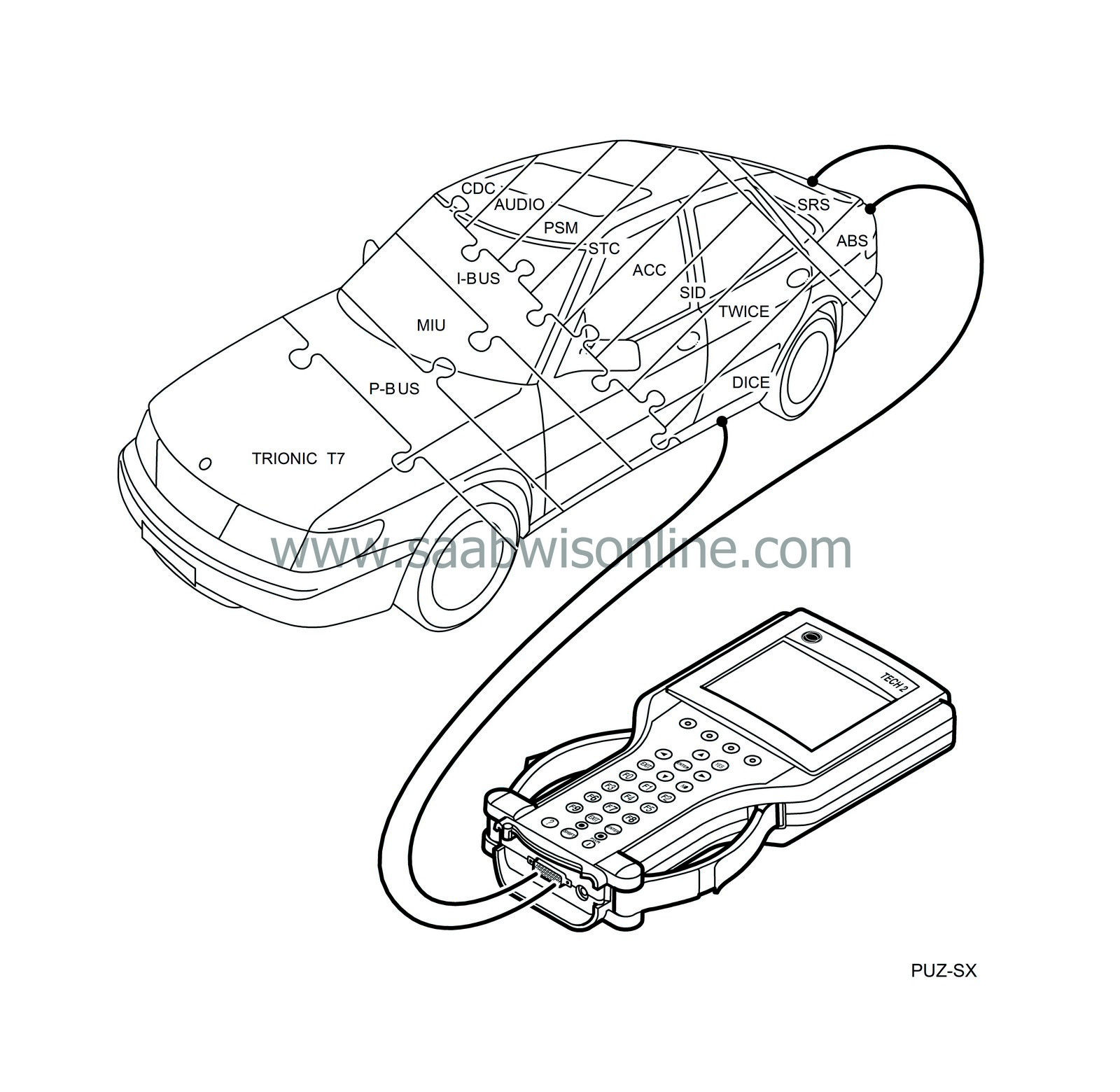Brief description
| Brief description |
| General |
The Saab Audio System is a complete sound system for the car, offering radio reception and several other functions.
The audio system is equipped with an electronic anti-theft protection which works in conjunction with the car by the audio system being “married” to the car and therefore belongs to just that car in which it was installed. Each time the audio system is turned on, a check is performed to determine if the audio system is the correct one.
The audio system is available in three versions: Audio System 1 (AS1), Audio System 2 (AS2) and Audio System 3 (AS3).
The audio system contains the following units:
| • |
Main Unit:
|
|
| - |
Radio
|
| - |
Cassette player (only AS1)
|
| - |
CD player (only AS2, AS3)
|
| • |
SID (display)
|
|
| • |
External amplifier (only AS3)
|
|
| • |
Loudspeakers
|
|
| • |
Antenna, electric
|
|
| • |
Antenna, fixed (Viggen)
|
|
| • |
Steering wheel controls
|
|
| • |
CD changer (option)
|
|
| Main Unit |
The main unit, central to the Saab Audio System, is located in the centre console. The radio, cassette player or CD player are integrated into the main unit. The main unit also contains the controls for the various functions of the audio system.
The main unit communicates with the various other units and systems via the car's bus and wiring harness.
| Radio |
The radio module in the audio system is an AM/FM receiver with PLL frequency synthesis for precise station tuning. The radio is factory-programmed to the frequency bands (2 x 6 AM and 3 x 6 FM) for the various markets. On power loss (e.g. removal of battery), no preset stations will be lost.
Audio Systems 2 and 3 fitted to cars for the EU market incorporate RDS radio, based on the double tuner system, which improves the quality of RDS reception and RDS radio services.
| Cassette Player (AS1) |
The cassette player is front-feed. The mechanical functions are fully microprocessor-controlled which reduces the load on the tape. Auto reverse, track search and blank skip are included.
| CD player (AS2, AS3) |
The CD player is front-feed with display for the CD disc inserted. The disc drawer holds 1 CD disc (diam. 8 or 12 cm). Random play and scan functions are included.
| Display |
The audio system uses the SID unit display to show the current settings for the source selected.
The main unit sends display information on the bus, which is read by the SID unit.
| External Amplifier (AS3) |
Audio System 3 has an external amplifier with two outputs for the loudspeakers in the front doors.
The amplifier has a separate power supply. It is not connected to the bus.
| Loudspeakers |
The Audio Systems have side loudspeakers in the dashboard and loudspeakers in the parcel shelf. Audio System 3 also has woofers in the front doors.
| Antenna, electric |
The audio systems include a telescopic AM/FM antenna for radio reception.
The antenna is located on the left rear wing and is driven by an electric motor, i.e. is extended and retracted by an actuating motor.
Power is supplied from the main unit and an amplified antenna signal is fed via coaxial cable to the radio.
| Antenna, fixed (Viggen) |
A shortened AM/FM antenna is used for radio reception on the Viggen. The same antenna is also used for a possible mobile telephone (GSM).
The antenna is fixed, and is located on the rear of the roof. A coaxial cable leads from the antenna to the main unit of the audio system.
| CD changer |
The CD changer is available as an option and located in the luggage compartment. The CD changer magazine holds 6 discs.
The CD changer is connected to the bus and communicates with the main unit via the bus. The CD changer is activated (turned on) when it receives a “Wake-up” signal sent via the bus from the main unit. The sound signal (balanced line output) from the CD changer is sent to the amplifier and loudspeakers via the main unit.
Standard equipment includes the possibility of connecting a CD changer. Two alternatives are available as an option: 1) CD-changer installed or 2) the car completely prepared for CD-changer.
| Steering wheel controls |
To easily control the most important functions of the audio system in a safe manner, the steering wheel has been fitted with special controls.
The controls are connected to the SID unit. SID detects the positions of the controls and sends information via the bus to the main unit.
| P-bus and I-bus |

The bus system in diesel cars is unchanged from M98 1/2 with bus-connected EDC15 and diesel pump.
Other petrol engine variants have the M2.10 or Trionic T5 engine management system and TCM on automatic cars. As previously, these system are not bus-connected.
The two power-train systems, EDC and the diesel pump, are however not connected to the I bus. These systems require considerably faster communication so that no delays are noticeable, e.g. when EDC requests a certain fuel mass for injection.
Therefore, they are connected through a separate buss called the P-bus (Powertrain Bus). The P-bus has a data transfer rate ten times higher than that of the I-bus.
The P-bus is also connected to the MIU (Main Instrument Unit). The MIU ensures that the information that is available on one bus is also available on the other.



